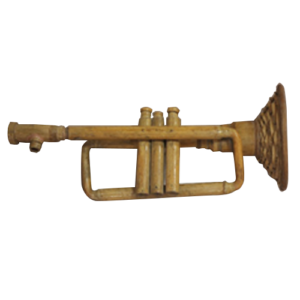Dendrocalamus asper (Schultes f.) Backer ex Heyne
Giant bamboo (Engl.); bolong-sina
Dendrocalamus asper (Schultes f.) Backer ex Heyne
Gigantochloa aspera Kurz, Salv. Lexicon Philipp. Trees (1963) 103.
Clump closely tufted, about 20 culms in a clump of 2-3 m diameter. Culms more than 20 m tall. Nodes raised, more so on the lower ones near the base, usually with many roots of up to 3 cm long; in rows of 4-7 near the base. Internodes hollow, cylindrical, more than 40 cm long, 12-16 cm in diameter near the base with wall thickness of 2.0 cm; 2.8-3.0 cm diameter at mid-culm with wall thickness of 0.4-0.5 cm; covered with fine closely appressed velvety brown hairs when young, persistent near the base. Culm sheaths large, 48 cm x 38 cm, deciduous, the lower ones tardily, very pale green when young, sparsely covered with dark brown hairs; blades reflexed with dense hairs, 5mm high, fringed with brown bristles; ligule 7 mm long, margin irregularly lacerate, fringed with bristles. Branches, more or less 7 per node at the middle portion, developing intravaginally, dominant primary branch 2.5 m long with smaller subequal branches on the side, lower part bearing aerial roots. Leaves 13-15 per branch, 30- 40 cm long x 3-9 cm wide, glabrous or the lower surface pubescent; base obtuse, margins scabrous; sheath up to 15 cm long, glabrous; auricles inconspicuous; ligule 1 mm high, truncate, glabrous, margin denticulate. Inflorescence borne on leafless branch of a leafy or leafless culm, with groups of pseudospikelets at the nodes; spikelets slightly laterally flattened, 6-9 x 5 mm, pubescent, comprising 4-5 florets, often with a sterile apical floret, seeds not seen.
Seen only in cultivation or naturalized. Grows well from low altitudes up to 1500 m.
Used in house construction, pulp and papermaking, bamboo plywood and tiles. The top to bottom of culms can be used for different kinds of musical instruments. Young shoots edible.
The densely persistent brown, velvety hairy covering the internodes near the base and the many aerial roots on the lower nodes down to the base which makes nodes appear swollen or raised are very distinguishable from other species.
Science in a creative industry.
The DOST-FPRDI has a Bamboo Musical Instruments Innovation R&D program aimed at improving the quality of locally-made bamboo musical instruments (BMIs) through science and innovative technologies. The program seeks to standardize the production of selected BMIs, develop prototype designs, analyze raw material sources and existing markets, and build a BMI processing facility. In addition, the program aims to document the ethnocultural story behind several BMIs and identify the bamboo species used in BMI production to promote public awareness and appreciation of the cultural importance of these musical instruments. The program is a collaboration with the University of the Philippines and Philippine Normal University for teaching modules and analyzing sound quality and standardization of BMI design. The DOST Grants-in-Aid program provides funding.
PhBMI


